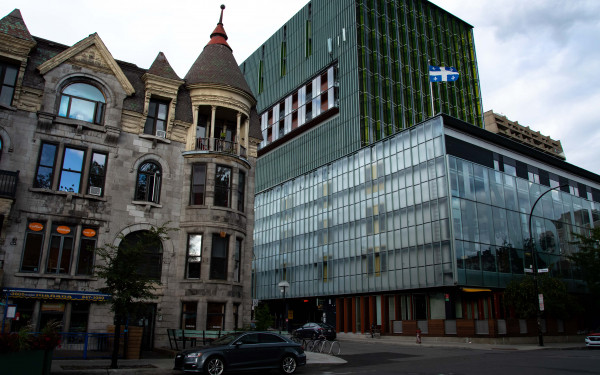Editorial: Students Can Help Fight Gentrification
When we think of what gentrification looks like, we often imagine yuppies living in ten-storey condominiums, shopping at Whole-Foods-like grocery stores, and frequenting cafes that sell bowls of branded cereal for $10.
And while that’s all true, outcomes like these usually represent only one part of the gentrifying process which happens in traditionally working-class, post-industrial neighbourhoods.
What is often overlooked is how university students, like us, are part of the process—and how we can also be one of the ways to help combat it. In districts like St. Henri and Plateau-Mont-Royal, university students or recent graduates, many of whom are not from these places, have become some of the largest demographics there.
In the last census for the Plateau district made in 2011, the two most popular age brackets for women were 20 to 24 and 25 to 29. For men it was 25 to 29 and 30 to 34. Within the age bracket of 25 to 64-years-old living in the Plateau, 64 per cent had obtained a university degree.
What these stats show is that current university students or recent graduates are abundant in gentrifying neighbourhoods—so we also have a responsibility to respect the longtime locals and the rich histories they’ve created.
“We need to be careful with the idea that individual tenants are the ones who contribute to gentrification and really see the market forces involved,” said Mona Luxion, a member of the Collectif pour un espace autogéré à St. Henri. “Often the first wave of gentrification is through these shopping venues—once an area is cool and hip then condos and expensive apartments start popping up around it.”
University students can be part of the problem, but that doesn’t mean we shouldn’t live in cheaper parts of town if that’s all we can afford. But when we do so, there are ways we can maintain the existing local economy, and prioritize the needs of the businesses and families that built it. Moving into a neighbourhood because of cheaper rent, Luxion explained, is less problematic than supporting high-end, gentrifying businesses. Their advice for students: link-up with existing gentrification resistance groups and community organizations.
Helping community organizations is fundamental, echoed Anna Kruzynski, a professor in Concordia’s School of Community and Public Affairs. Talk to locals, learn the history, and boycott businesses that many agree are contributing to the gentrifying process, she explained.
It’s essential to keep down high rent that force families looking for a permanent home to move away. As students tend to temporarily stay in apartments on a year-to-year basis, we provide opportunities for landlords to raise rent dramatically each year. One way students can help fight this aspect of gentrification, Kruzynski continued, is to make sure our rent hasn’t gone through illegal increases—and to complain to Régie du logement if it has. Fighting illegal practices by landlords is a cultural privilege—not necessarily a monetary one—students are able to do, she said.
If the Plateau represents an almost finished product of gentrification, then St. Henri is the present battleground to it. In May, approximately 30 vigilantes vandalized and robbed 3734, a boutique grocery store in the area, claiming they redistributed the food to locals. Just this Saturday, around 40 people marched along Notre-Dame St. that runs through St. Henri to vocalize their dissent to gentrification.
Thirty-four per cent of the population in St. Henri has a low-income compared to an average of 25 per cent for the entirety of Montreal, according to a 2014 territorial analysis by Centraide of Greater Montreal. Young people, under the age of 18, and seniors, 65 and over, are heavily represented in this statistic. But in the Sud-Ouest district—which includes St. Henri—the largest age demographic is the 25 to 29 range, and 71 per cent of residents in the neighbourhood are renters. The days of a booming industrial sector full of families are dissipating, as instead 20-something-year-olds are moving there for the fancy restaurants and over-priced barbershops.
“As a sign of the times and the profound changes affecting it, St. Henri is now considered a neighbourhood to hang your hat or simply hang out, and not a place to find a job, as the remaining industrial land is highly coveted by developers,” the Centraide analysis concluded.
University students, especially in Montreal, generally lack residential permanence. With many coming from out-of-province and even out-of-country, we often take more from the places we live in than give back during our relatively short stays.
While we can’t promise to live in Montreal forever, we can choose to spend our time here more wisely, namely by respecting the people who have come before us and will remain here past the time we receive our diplomas.


_600_832_s.png)




